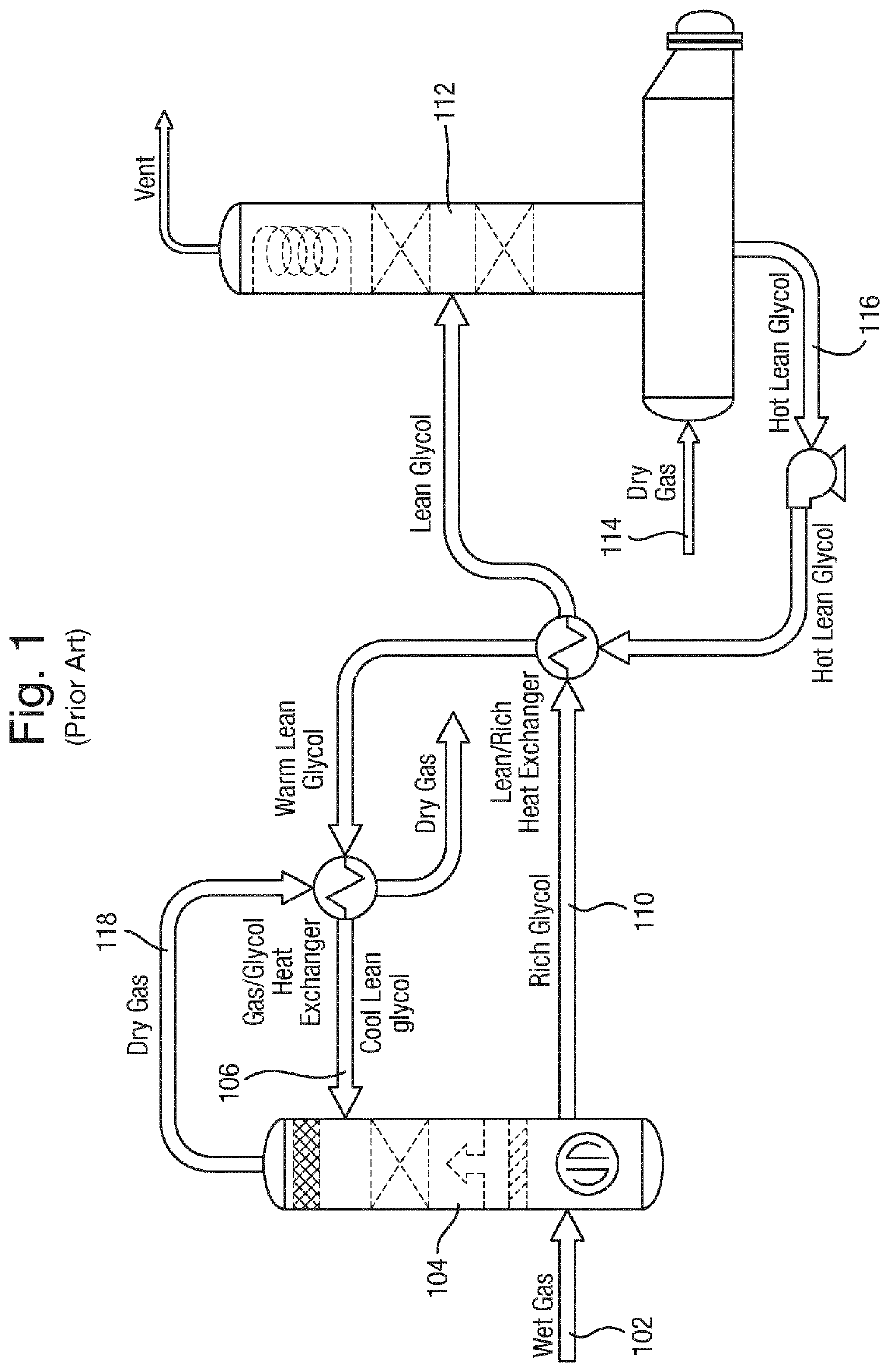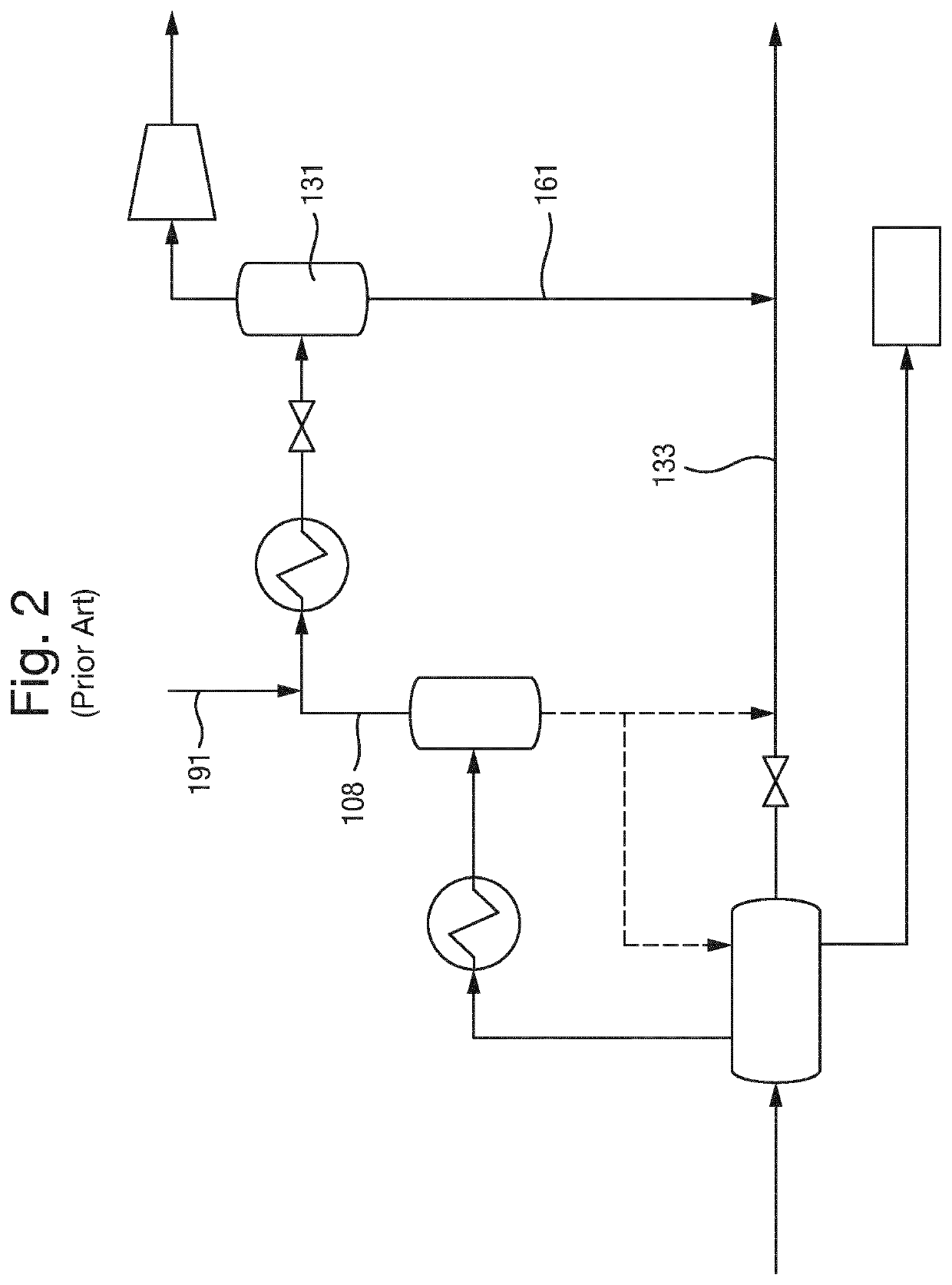Method and apparatus for dehydration of a hydrocarbon gas
a hydrocarbon gas and dehydration technology, applied in the direction of gaseous mixture working up, separation process, borehole/well accessories, etc., can solve the problems of reducing affecting the dehydration efficiency of hydrocarbon gas, so as to inhibit the formation of hydrates and knock out a greater proportion of water
- Summary
- Abstract
- Description
- Claims
- Application Information
AI Technical Summary
Benefits of technology
Problems solved by technology
Method used
Image
Examples
Embodiment Construction
[0088]FIG. 3 schematically illustrates a subsea processing facility 2 for processing a multiphase hydrocarbon flow from a wellhead. The facility 2 is arranged to receive a multiphase hydrocarbon flow, separate the hydrocarbon flow into a gas phase and a liquid phase, and process at least the gas phase to a desired specification, for example a pipeline transportation specification. Various techniques for processing the liquid phase are known in the art and can be adopted as appropriate. Details of the liquid phase processing will not be described herein in detail.
[0089]In the following description, the terms “lean glycol”, “semi-lean glycol”, “ultra-lean glycol” and “rich glycol” are used. However, it should be understood that these terms are not intended to have specific meanings, but are used herein to give a general indication of the purity of the glycol at the various stages.
[0090]Within the art, the terms “lean glycol” and “rich glycol” are understood to refer, respectively, to ...
PUM
| Property | Measurement | Unit |
|---|---|---|
| temperature | aaaaa | aaaaa |
| pressures | aaaaa | aaaaa |
| temperature | aaaaa | aaaaa |
Abstract
Description
Claims
Application Information
 Login to View More
Login to View More - R&D
- Intellectual Property
- Life Sciences
- Materials
- Tech Scout
- Unparalleled Data Quality
- Higher Quality Content
- 60% Fewer Hallucinations
Browse by: Latest US Patents, China's latest patents, Technical Efficacy Thesaurus, Application Domain, Technology Topic, Popular Technical Reports.
© 2025 PatSnap. All rights reserved.Legal|Privacy policy|Modern Slavery Act Transparency Statement|Sitemap|About US| Contact US: help@patsnap.com



